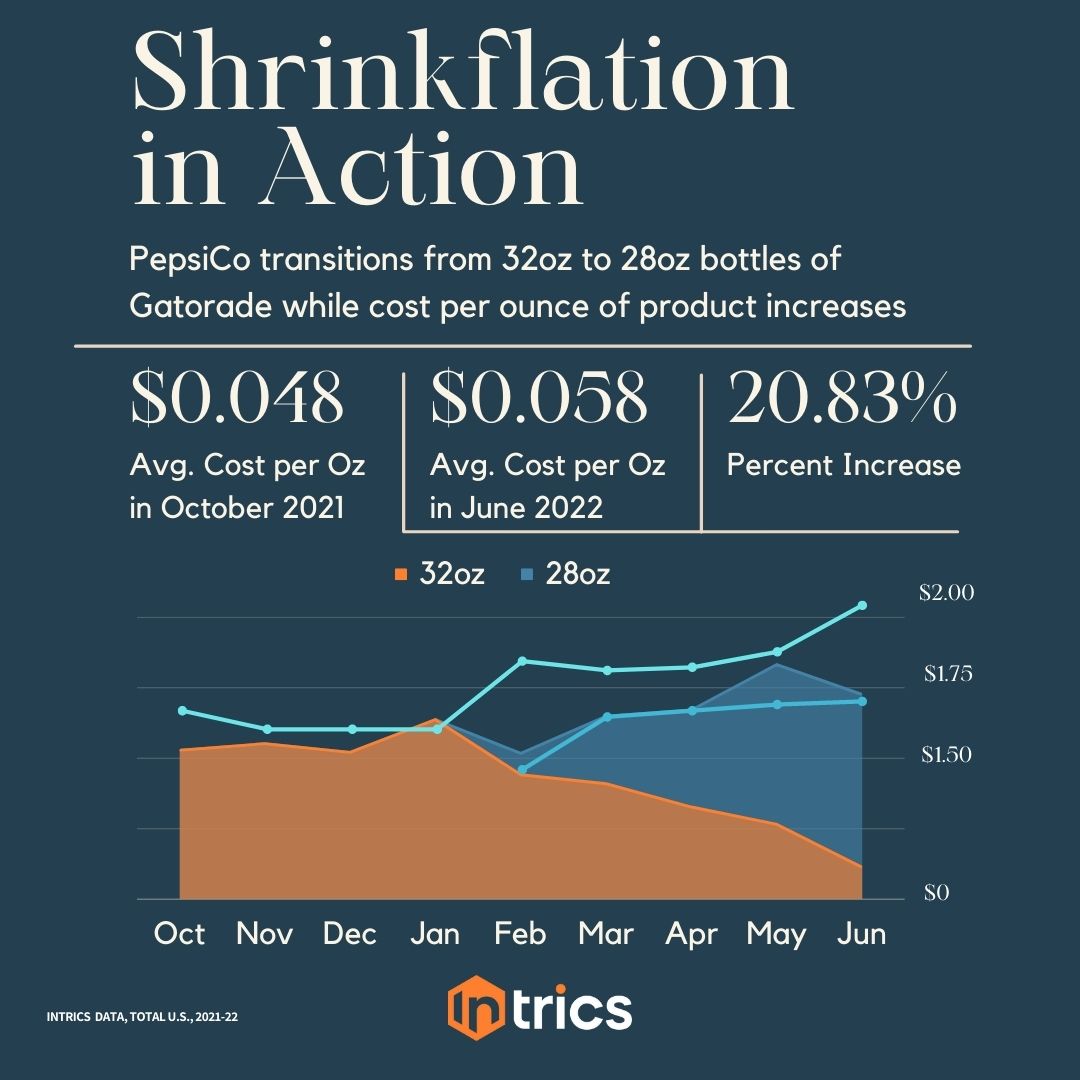
Using Shrinkflation as a Strategy
Inflation is a natural part of any economy. When prices rise steadily over time, it affects the cost of goods and services. For grocers, customer price perception matters more than ever. Grocers must adjust their strategies to account for inflationary pressures while still providing customers with their desired products. One way to mitigate these pressures is through shrinkflation, a process that involves shrinking the size of an item while maintaining the same price-per-ounce. Let’s look at how small grocers can use this technique to introduce new items without adversely impacting their bottom line.

What is Price Perception?
Price perception is an individual or group’s psychological reaction to the cost of goods or services. The idea behind price perception is that customers have certain expectations regarding the cost of goods, which can differ significantly from one customer base to another. For example, a customer in a rural area may have different expectations than a customer in an urban area regarding the cost of groceries.
Price perception becomes even more critical in an inflationary market because prices constantly rise. As shoppers become accustomed to higher prices, they may expect higher levels of quality or service with each purchase—even if those expectations are unrealistic or unaffordable for small businesses. Grocers need to be aware of their customer’s expectations so that they can adjust their pricing strategies accordingly.
What is Shrinkflation?
At its core, shrinkflation involves decreasing the size of a product while maintaining the same price per ounce. Shrinkflation allows grocers to adjust items on their shelves without making drastic changes in pricing, which helps keep prices stable during periods of inflation. For example, suppose Oreos recently increased in cost due to inflation. In that case, a grocer could reduce the number of cookies per package and maintain the current price-per-ounce ratio instead of raising prices across the board. This helps create a lower price perception for customers while keeping costs consistent for grocers.
Benefits of Shrinkflation for Price Perception
When appropriately used, shrinkflation can help small grocers manage their bottom line during inflation or when introducing new items onto store shelves. It also gives grocers more freedom when adding new products because they don’t have to worry about setting higher prices or taking away from customer satisfaction by reducing quantity or quality. Additionally, shrinkflation can be used as an effective marketing tool because customers may perceive lower prices even when they are not paying less for each purchased item.
Applying Shrinkflation
To get the most out of shrinkflation, it’s crucial that grocers carefully plan ahead and thoroughly research any new items before introducing them into their stores. They should determine how much inflation has impacted certain products, look at their overall product assortment within their stores and their competitive market, and decide which ones would benefit most from using shrinkflation as an introduction strategy. (If you need help figuring out where to start, Intrics can help with this!) Grocers should also continue strategically monitoring pricing dynamics not to create a negative price perception when customers compare their stores to other area retailers. Finally, grocers should always focus on building solid relationships with reliable vendors to access fresh inventory when needed. They can often predict future needs more accurately based on past performance data from their network of retailers.
Conclusion
In today’s inflationary markets, where rising expenses make it difficult to remain competitive while providing quality products, shrinkflation presents a practical solution that allows grocers to introduce new items and maintain their current loyal customer base. Perceived value retention is a crucial component of any retailer’s pricing strategy. By implementing this strategy into their business model, grocers can offer their customers more variety without sacrificing quality, all while improving operational efficiency and increasing profits from sales generated on newly introduced items and those already available on their shelves!
Intrics provides insights and clarity by analyzing over 100 million price changes weekly from top retailers in every market of the United States. By considering national brands and private-label alike and linking disparate SKUs and descriptions to a single UPC, Intrics provides product-level indexes in your market. This allows you to be the first to react by quickly understanding changes to product prices, whether your competitors are absorbing or forwarding increased costs to consumers, and how your prices and price changes compare to theirs.
Want to know more about how ‘shrinkflation’ is changing today’s market?

How ‘Shrinkflation’ is Changing the Retail World
Curious to see how quickly—and to what effect—shrinkflation is taking over grocery store shelves, Intrics reviewed data collected from grocery stores nationwide. From October 2021 through June 2022, we followed one of PepsiCo’s popular sports drinks, Gatorade. Our goal was to see how the company has changed its product pricing and assortment using shrinkflation methods.
